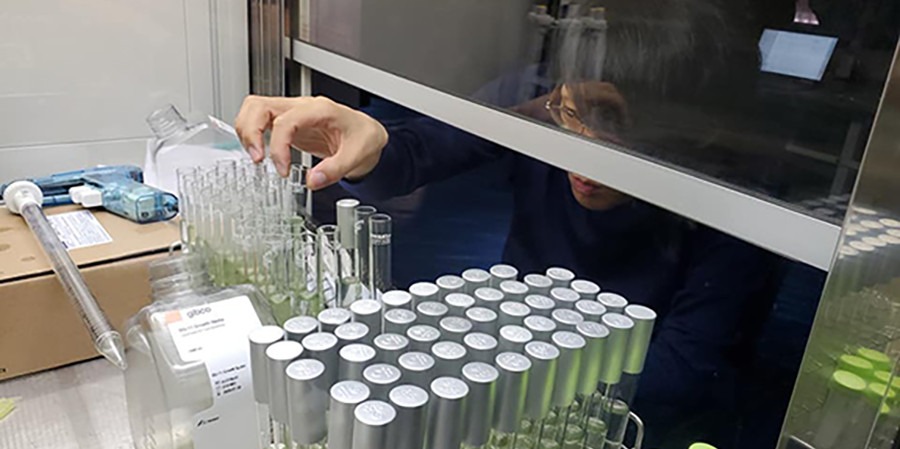Artists push boundaries with ‘Symbionts in the Biosphere’
With the final showing of Symbionts: Contemporary Artists and the Biosphere on February 26, 2023, this new generation within the bio art sphere is worth looking into.
Bio art is a contemporary art form that integrates biology, life sciences, and biotechnology. It entails the use of living organisms as artistic materials or subjects, including bacteria, plants, animals, or human tissues. Bio artists frequently cooperate with scientists, researchers, and biotechnology experts to create their works. This type of art attracts innovators, creators, and those who have a strong interest in the natural elements found on Earth. The exhibition Symbionts targeted the most innovative bio art practitioners. The use of synthetic biology distinguished the early days of bio art; most famously, Eduardo Kac’s glowing green rabbit. In 2000, it was genetically engineered with a fluorescent protein from jellyfish.
However, there was a surge to a new strand of bio art: symbiotic art. The term “symbiotic art” refers to the close and often mutually beneficial relationship that exists between different species. In the context of bio art, symbiotic art commonly includes artists colluding with living organisms, such as bacteria, fungi, or other microorganisms, to develop artworks or installations that blur the distinction between living and non-living entities.
Symbionts are organisms of different species that live together and thrive because of their interdependence – any association between organisms of different species can be a symbiont. For instance, Carol and Zooxanthellae are symbionts where the photosynthesizing algae (Zooxanthellae) lives inside the coral tissue. The algae absorbs sunlight and converts it into oxygen and energy, supplying nutrients to the coral tissue, while the coral tissue generates carbon dioxide, phosphorous, and nitrogen for the algae.
These artists [are] Bio artists who look beyond code as they attempt to forge humble, reciprocal relationships with other human agents
–Art News
The exhibition, Symbionts: Contemporary Artists and the Biosphere was organized by the MIT List Visual Arts Center and curated by Caroline A. Jones, Natalie Bell, and Selby Nimrod. This exhibition featured fourteen international artists whose work explored what it means to be interdependent by involving living materials as collaborators in creation, just as humans are partners in producing and maintaining the biosphere. Art News summarises these artists as “bio artists who look beyond code as they attempt to forge humble, reciprocal relationships with other-than-human agents”.
Essentially, they find beauty, collaboration, and innovation in matters that can be identified outside the human form. The impacts of engaging with living entities such as fungi or bacteria are fascinating and almost otherworldly. It transformed some of the artwork during the course of the exhibition, so a visitor on day one would have seen something very different from a visitor on day twenty.
This type of exhibition has been revolutionary for the art world. Showcasing experimental practices that blur the lines between artist, medium, and collaborator draws our attention to the fact that we are not alone in this world – we can create art, and many different organisms can as well if we choose to see it. While unveiling what it means to be an artist (to be a human) this exhibition engages visitors, thinkers, artists, and all people at the intersections of biological, social, and economic systems. Overall, this exhibition produces the critical interactions that shape our world and the interspecies entanglements that evolve it are right on our doorstep, we must choose to no longer ignore the organisms that make our world today.
This exhibition can raise many philosophical questions regarding art and artists which transcend boundaries of what does it mean to be an artist? In what ways can you “collaborate” with a species you can’t talk to? How can organisms we consider so simple produce such beauty that would be incomprehensible without human meaning and metaphors?

Comments